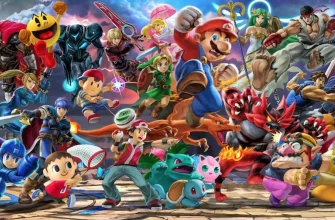The question of relevancy is an important one in the esports realm. With so many new and exciting titles being released every couple of months, developers have to polish their products on a fairly frequent basis in order to remain relevant. The competition is fierce, and this especially holds true for the free-to-play market. Nowadays, you can’t “just” offer a game for free and expect it to grow into something big — it has to be deep, complex, layered, fascinating, and, perhaps most importantly, more engaging than its competition.
That’s a tall task, no matter how you slice it.
Remaining relevant in this ever-changing field is, therefore, paramount. Developers need to constantly iterate and update their products in an attempt to entertain (and retain) their players. Some companies do this better than others. Among all of them — as far as the esports realm goes — Valve stands out as a particularly enigmatic one.
They have their own way of doing things, a unique M.O. if you will. And, to be frank, they’ve found incredible amounts of success over the years, despite the odds. But the way they’ve been handling Dota 2 is quite puzzling, and it isn’t something you’d expect from a company of their caliber. After all, it’s one of their most lucrative IPs.
Dota 2’s unique take on updates
The thing with Dota 2 is — and this is true for both the game as well as its competitive scene — it rarely evolves. Heck, one can argue that it doesn’t even evolve at all, and even when Valve decides to ship a couple of game-changing updates, they do so on their own accord and at the most random of times. It’s as if there’s no grand plan or structure they’re adhering to. On paper, most of it seems arbitrary.
And their approach is also somewhat unhinged. Most developers slightly tweak and fine tune their products. Valve, on the other hand, isn’t a fan of such a “meek” and “tame” approach. Instead of taking things slow, they push out huge updates that turn the game on its head. Sometimes this works to great effect, although that’s rarely the case. And even when they do change things, it’s often long overdue.
Most other esports are developing at a staggering pace, and there are many developers around the world who are doing amazing things with their properties. In many ways, it feels like everything regarding the esports realm is changing and evolving (mostly for the better), and yet Dota remains stagnant. Many years have passed, and yet the game still feels the same. Now, to be fair, that’s not necessarily a bad thing, but when everything around it is changing at such a rapid pace, it’s only natural for Dota to lose a bit of its allure.
Dota 2 will remain relevant for the foreseeable future mainly due to it being Dota. Everyone knows of Dota, and everyone either loves it or hates it. That, in itself, is enough to maintain a respectable number of players and spectators, but it’s not enough to make it relevant in the long term. Soon enough, even those who love it will become more and more indifferent to its existence.
Dota 2 takes inspiration from League of Legends Championship Series. Maybe.
In order to grow and survive in the ever-changing esports landscape, Dota 2 needs to offer players something new and it needs to do it fast. Valve always had a great product on their hands, but after almost seven years even “great” becomes stale. Games like Fortnite, PUBG, and Apex Legends seemingly came out of nowhere and took the world by surprise — these releases were like tectonic shifts.
New titles were brought into existence, and once all of a sudden, everyone’s attention shifted. The passing of the guard is a natural thing, and it occurs in gaming as well. Esports is, therefore, no different.
Nowadays, competitive Dota is mostly talked about when it’s time for The International and its monumental prize pool. Nothing more, nothing less.
The fact that the game is perceived as slow and overly complicated doesn’t help either. Without a way to bring new players in, Dota 2 is bound to regress until it becomes irrelevant in the esports realm. Valve certainly isn’t making any proactive moves to either make it a bit more appealing (and accessible) to the masses or more engaging for long-time fans. For some reason, Valve is content. They don’t see the underlying problems, and are thinking “why fix something that isn’t broken?”
But this train of thought is far from a positive one, and it only makes sense in a vacuum.

The 2017 League of Legends World Championship was held at the Olympic Bird’s Nest in Beijing — the same arena where Usain Bolt set multiple records nine years beforehand. The Overwatch League had a fantastic opening season and it exceeded even the most optimistic expectations and projections. These leagues also allow fans to tune in every week and actually build a connection with the entire esport and its many idiosyncratic teams and narratives.
Conversely, Dota 2’s calendar is sparse and is filled with sporadic tournaments. They do happen on a regular basis, but they last for a week or so, and then there’s nothing worthy of your time for a month, and sometimes even more. Other than the five Majors each year (and The International, of course), there’s not much to get excited about. Minor tournaments look nice on paper, but they mostly lack top-tier play as the best teams in the world often decide to skip them entirely.
No one’s saying that a weekly set-up would be better (like in the case of the Overwatch League or League of Legends), but the one that’s currently in use definitely feels outdated and, frankly, unengaging. The underwhelming viewership numbers tell the same tale.
Valve is contemplating regional leagues for Dota 2. Do you think this will improve Dota 2’s esports scene?
- Yes, definitely
- No, not really
TeamLiquid.net recently reported that the Dota 2 Pro Circuit format will possibly consist of three majors and a series of regional leagues following The International 2020. The league’s open format will allow rookie teams to earn a spot in tier-two leagues through open qualifiers. This could lead to sponsorless and organizationless teams to fight for a spot in majors. And more importantly, this will maybe give Dota 2 a structure that echoes that of the LCS, giving the game a bigger and more consistent audience.
As of right now, this is a rumor. But it’s given a lot of fans hope.
Dota 2 is a complex beast, and many players fell in love with its many layers and intricacies, but as time goes on, our interests shift and our attention gets relocated elsewhere. Valve is doing very little to keep us engaged, so the fact that we’re seeing a worrying decline in Dota’s playerbase doesn’t come as a surprise.
It’s an expected outcome, and it’s depressing to watch.
Competitive Dota didn’t evolve much over the years, if at all. And, much like with the game itself and its ludicrous patch cycle, newer and more exciting things are coming our way and are asking for attention.
Now, Dota 2 is by no means a dying game or a dying esport, although it is declining, and the signs are becoming more and more evident. The competitive scene will live on for the foreseeable future, but the outlook isn’t nearly as optimistic as it should be.
In many ways, it feels like the community itself is keeping the game alive — they’re doing Valve’s job. But such a state of affairs is not sustainable and it cannot go on forever. In order to ensure longevity, Valve needs to go back to the drawing board and come up with a long-term plan that’ll imbue their venerable IP with new life. Otherwise, it’s bound to become a niche and eventually fade into obscurity.






